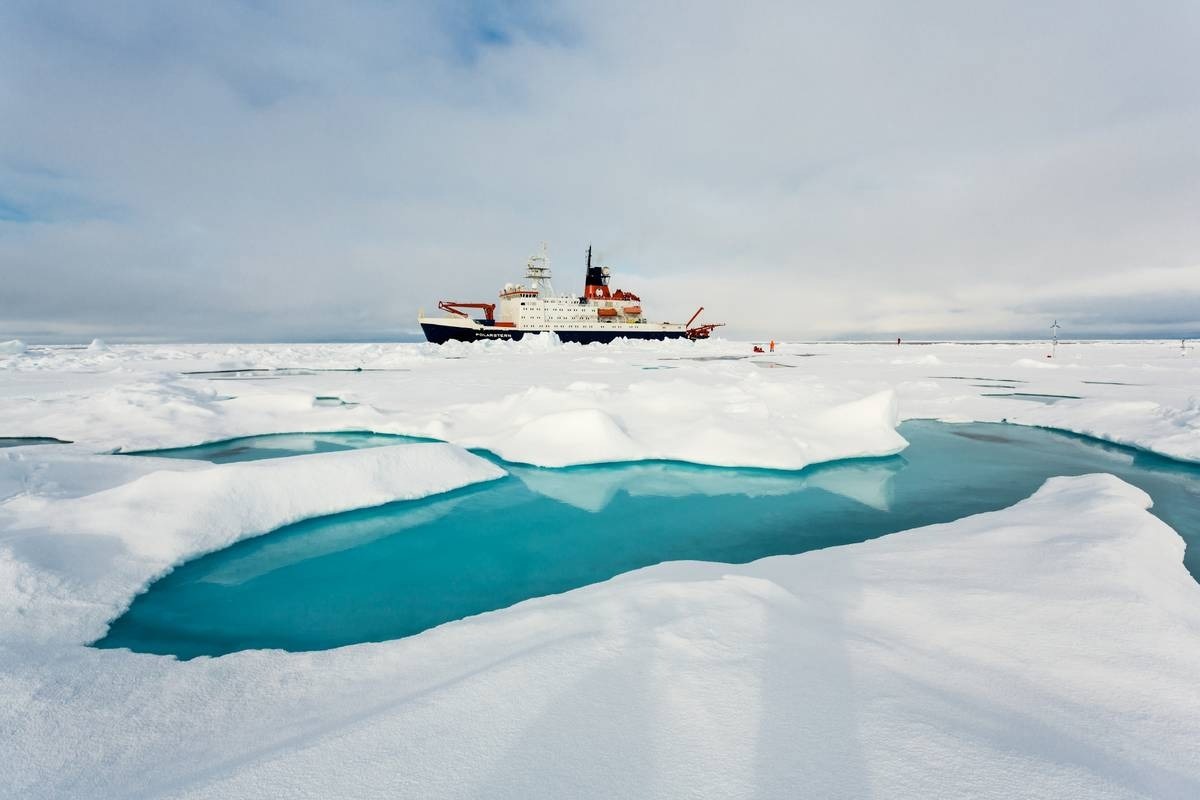The research vessel Polarstern is scheduled to depart from Troms, Norway, on Thursday, August 3rd, 2023, for the North Pole. A group of fifty scientists will spend two months exploring the Arctic in transition as sea ice extent approaches its annual minimum in September.
 Polarstern on ice station. Image Credit: Stefan Hendricks
Polarstern on ice station. Image Credit: Stefan Hendricks
Researchers will investigate sea ice biology, chemistry, and physics, and also the impacts of sea ice retreat on the entire ocean system, from the surface to the deep sea. Antje Boetius was a participant in the largest ever Arctic Sea ice minimum and its consequences for deep sea life 11 years ago. She is now returning with her group to compare the current state of the Arctic with data from the MOSAiC expedition 2019/20.
“I am very excited to see how sea ice and ocean life have changed over the last decade,” states Antje Boetius.
In 2012, we were on site during the lowest documented summer sea ice extent to date and were able to see significant impacts on the entire ecosystem of the central Arctic Ocean, down to over four kilometers of water depth. At the moment, I am monitoring the sea ice situation at www.meereisportal.de particularly intensively. We don’t yet know whether a new minimum will be reached, given the globally hot year 2023 and the fact that the sea ice in Antarctica is at a record low.
Antje Boetius, Director, Alfred Wegener Institute, Helmholtz Centre for Polar and Marine Research
“The ice currently covers an area of just under 7.5 million square kilometers, similar to that of the past two years. This means that there is still about one million square kilometers more ice than in 2012. However, the summer melt is in full swing, and the wind in particular will determine how the porous, brittle ice continues to be distributed in the coming weeks,” noted Dr. Marcel Nicolaus, Head of the Sea Ice Physics Team and MOSAiC Expert.
The expedition group is carefully examining how local changes in the composition of the sea ice are happening: Sea ice thickness is measured using helicopter-towed sensors, and the composition of the sea ice can be examined using ice cores. Algae living on the ice can also be studied.
When the ocean’s surface is still covered in snow or has already formed melt water ponds, an underwater robot measures how much light penetrates the ice and into the water. Micro algae (phytoplankton), which inhabit the upper water layers, can use the light as a source of energy for photosynthesis.
From the water’s surface to the deep sea floor, scientists are studying (micro-)biologically, chemically, and physically what happens to the carbon they bind. The onboard planktologists bring out various camera systems and autonomous samplers to follow the path of life directly under the ice into the deep sea.
For the project, a number of “ice stations” are planned.
The ship docks at a floe, then the ice researchers go onto the floe, we deploy various robots and free-fall devices and, in parallel, we look at the creatures at the bottom with the zoologists, more than 4000 meters below. In this way, we recognize connections in all levels of the ocean from the sea ice to the seabed.
Antje Boetius, Director, Alfred Wegener Institute, Helmholtz Centre for Polar and Marine Research
In doing so, the team is going back to the same research locations it visited in 2012 for comparative studies: the central Arctic’s potentially perennially ice-covered regions and the particularly fruitful marginal ice zone.
The work will make use of a variety of tried-and-true as well as cutting-edge technologies, such as deep-sea crawlers, lander systems, and the Ocean Floor Observation and Bathymetry System (OFOBS) created at the AWI. After the summer ice melts and the formation of the autumn sea ice starts, the return occurs.
A camera crew from UFA Documentary GmbH, which is filming the expedition, is among the participants. The television documentary, being produced in collaboration with NDR, is set to air on ARD around the turn of the year. During the expedition, interested parties can listen to Radio Bremen's radio program and follow the expedition via the Polarstern app and the Alfred Wegener Institute’s social media channels. Polarstern will return to its home port of Bremerhaven on October 1st, 2023.